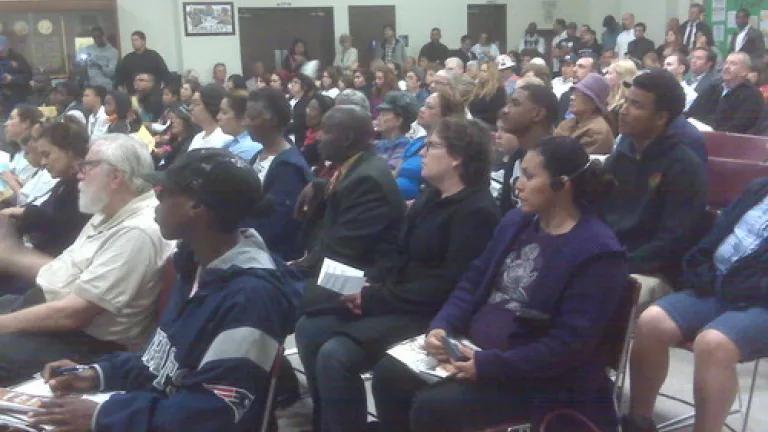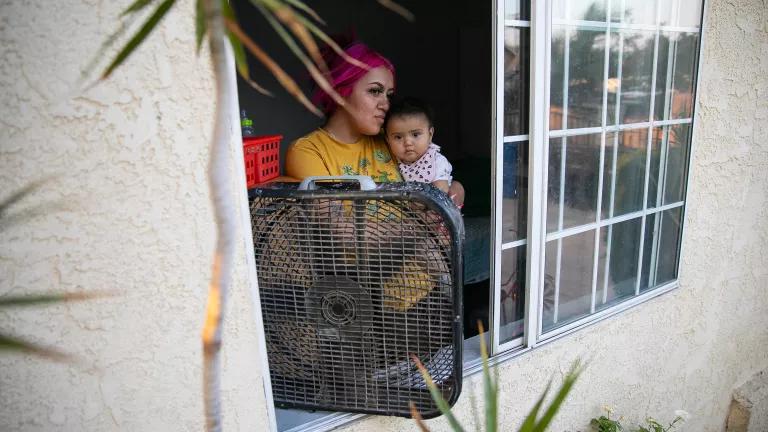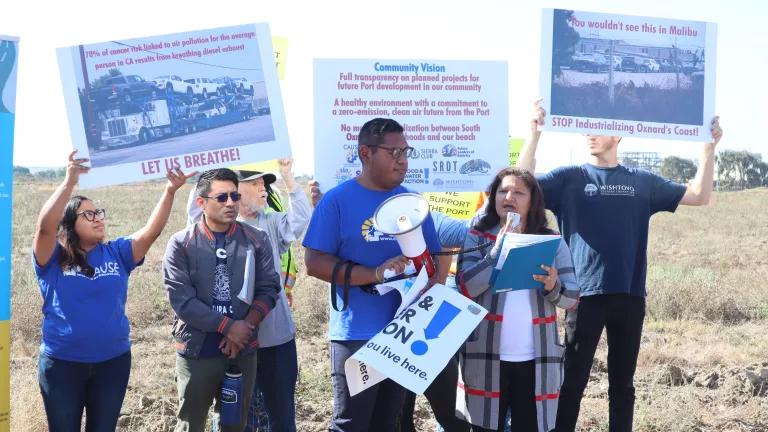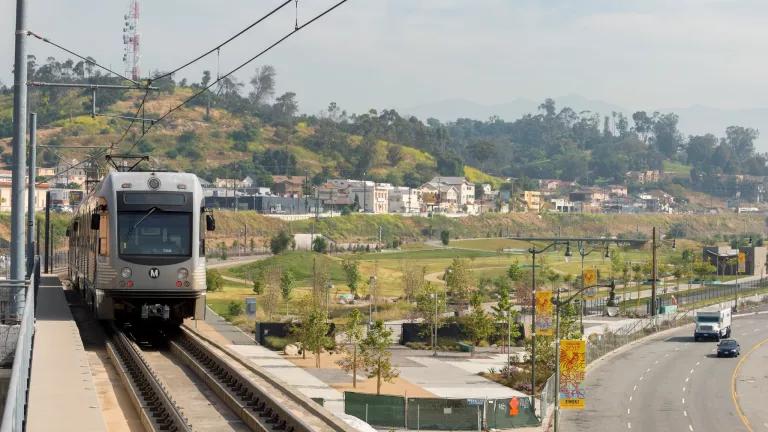Long Beach Councilmember Johnson Holds a Packed-House Hearing for Community Members to Discuss BNSF's Proposed LA-Area SCIG Rail Yard

Last night there was another public hearing overflowing with community members wanting to speak out about the proposed rail yard project known as the “SCIG”—the Southern California International Gateway. What was different about last night, however, was that the hearing was not organized by the agency overseeing the project—the Port of Los Angeles. Normally, the lead agency overseeing a proposed project holds hearings for the public to learn about the project and tell the agency their comments. The Port of Los Angeles did hold such a hearing a few weeks ago, but there were so many community members attending that only about half of them could fit in the packed room, while the other half had to stay outside. The hearing went on for several hours, but many still did not get an opportunity to share their comments with the agency. Many requested that the agency hold a second hearing, but the Port of Los Angeles declined to do so.
Although it is the city and port of Los Angeles that have jurisdiction over this project, it is residents in the neighboring city of Long Beach that would be most impacted by the project’s toxic air pollution. Those that would be most impacted include several schools, homes, day care centers, and a homeless shelter directly adjacent to the proposed project, all of which are in the district of Long Beach City Councilmember James Johnson. Outraged that Los Angeles refused to hold a second hearing, he decided to organize one himself and locate it in the heart of the community that would be most impacted: West Long Beach.
Councilmember Johnson spoke to the packed room at the beginning of the hearing. He was met with cheers of appreciation and support. Finally there was a public official voicing the same concerns that have been worrying so much of the community. He expressed concerns about the Port’s environmental analysis of the project and the Port’s failure to do more to reduce the project’s air pollution. While the Port’s environmental analysis in its recently re-circulated Draft Environmental Impact Report does include some discussion of a goal for the rail yard to utilize zero emission technologies, the analysis does not explain how this would happen or provide assurances that the rail yard would actually follow through on this life-saving goal.
In the hours that followed, community members stood up and voiced their own comments about the proposed rail yard. Many were moms, testifying that their children have asthma and they do not want the air pollution and illness that this new rail yard would bring to their neighborhood. A group of kids from the Villages at Cabrillo stood up and testified in opposition to the project. One young man took the microphone and told the crowd that he has asthma and does not want it to get worse, and facing the audience he thanked the community for their support. The Villages at Cabrillo is a 26 acre facility that provides housing and other services to homeless veterans, families, and youth. The Port’s own analysis admits that the Villages at Cabrillo would see the highest levels of air pollution from the rail yard, increasing their risk of cancer and other health problems from exposure to the harmful air pollution. I only wish the Port’s Board of Harbor Commissioners—who will be the ones deciding to move forward with the rail yard or not—were there to see these kids. They have already been through too much, and were asking the Port not to put a toxic project right next to a place that has finally provided them some shelter.

After I gave my three minutes of testimony in opposition to the project, I talked a little bit with a woman I was sitting next to in the audience. She was sitting patiently through the entire hearing, listening and watching. She told me that all of her kids and her husband have asthma, and her mother-in-law recently passed away because of an asthma attack. She told me she has come to so many public meetings, but it never changes anything. She said there did not used to be so many trucks in the area, this didn’t used to be a problem. But now there are so many trucks, and this project proposes to bring thousands more trucks into the area every day.
I can only hope that through the work of hundreds of community members voicing their concerns and the dedication of our coalition of environmental and community groups, that this time things will turn out differently.
If you want to submit your own comments to the Port of Los Angeles, you can submit a comment via e-mail to ceqacomments@portla.org until November 13.



